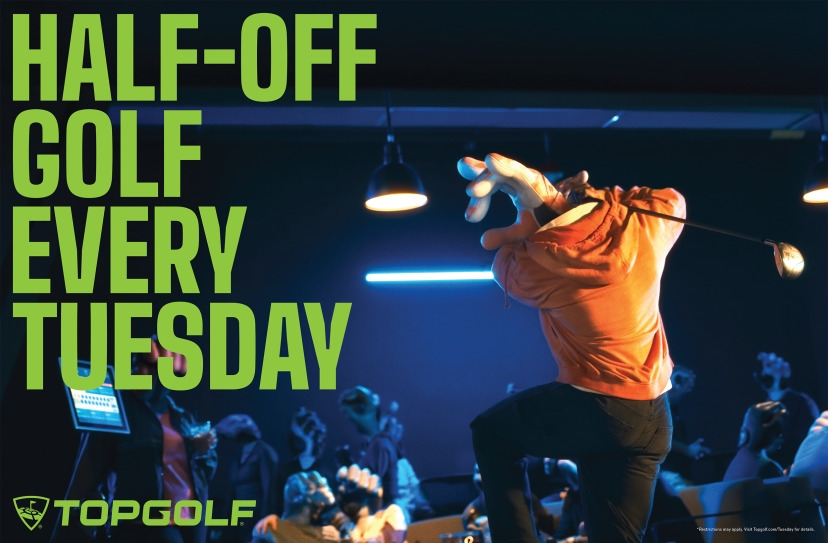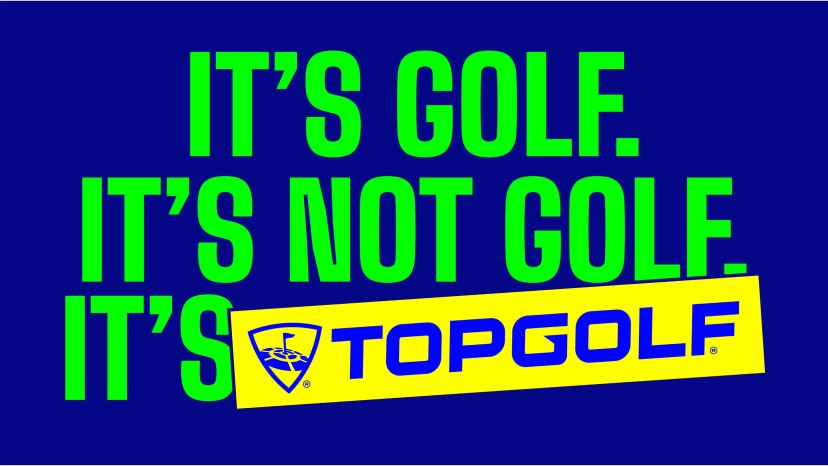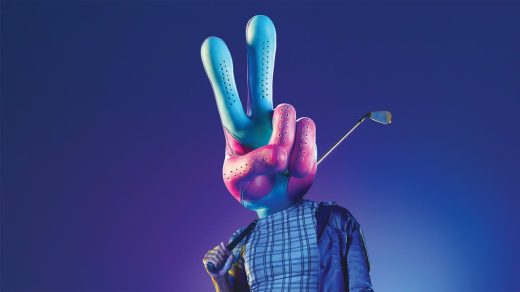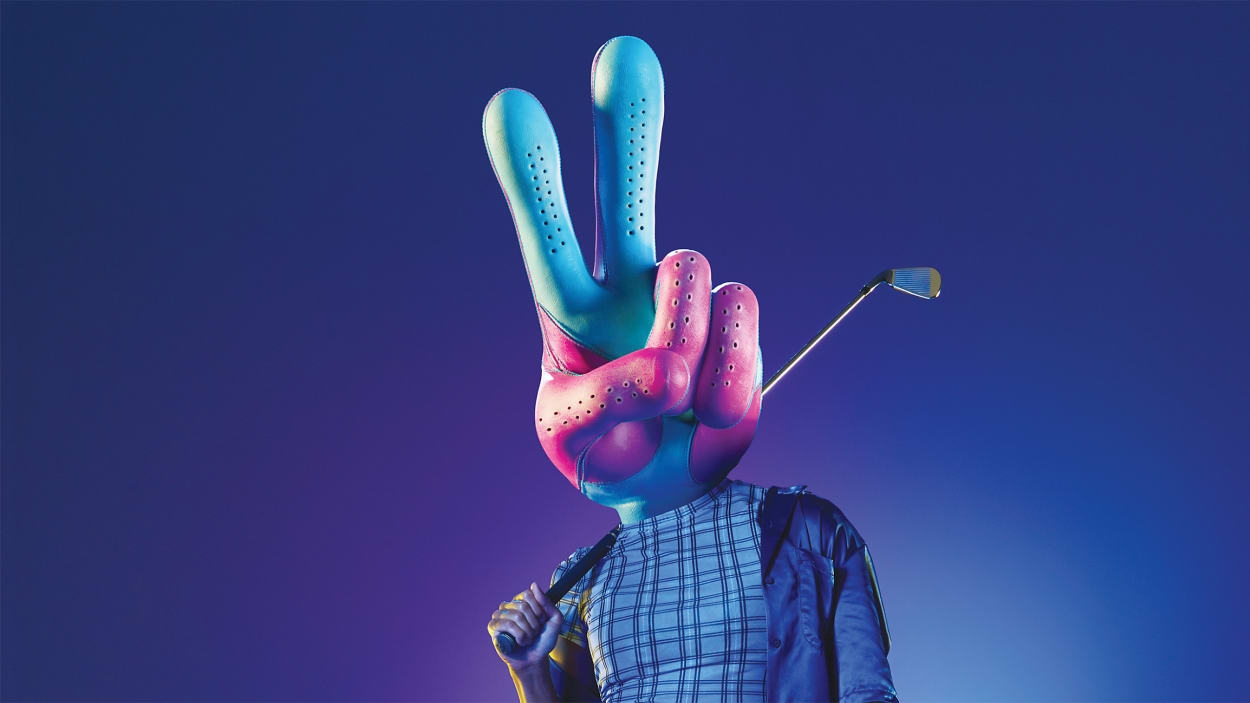How Topgolf plans to become even bigger than actual golf
Two years ago, Topgolf chief marketing officer Geoff Cottrill was at a golf tournament in Jacksonville, Florida, when he and a friend were walking the course and spotted two kids laughing hysterically as they rolled down a hill. Cottrill turned to his friend and said, “If you and I did that, they’d kick us out of here.”
If you could distil Topgolf’s mission, it’s to make more golfers feel like those kids and less like Judge Smails. Topgolf’s overall aim is to get as many people as possible swinging a club, while dispelling the notion of golf as an exclusive activity. “We are going to have a massive impact on the game of golf over the next five to 10 years,” says Cottrill, and he has the numbers to back it up.
In 2022, Topgolf had more than 31 million players across its more than 95 venues, online games, and third party driving ranges using its Toptracer technology. The high-tech range experience started in the United Kingdom in 2000, expanded to the United States in 2005, and was acquired by leading golf club manufacturer Callaway in 2021 for $2.6 billion. To reflect its importance to Callaway’s future, this past year the company renamed itself Topgolf Callaway. The Topgolf side of the business makes up about 40% of the company’s overall revenue and is the growth engine: For the first half of 2023, Topgolf grew 20.5% over the year earlier period, to $874.3 million.

The National Golf Federation estimates that 41.1 million Americans played some kind of golf in 2022. Among 18-to-34 year-olds, 6.2 million players played on actual golf courses, while 5.8 million played exclusively at “off-course” venues like Topgolf. The company is adding 11 new venues this year, and expects them to bring up to four million new off-course golfers annually through its doors. Over the next five years, Topgolf expects to expand from its current 95 global locations to more than 150 and 70 million visits.
To help in that aim, Topgolf this week is launching a new brand campaign, an extension of its previous work launched late last year, but doubling down on its ambition to seamlessly blend golf with . . . not golf. So far, as its earnings will attest, it’s working. And Topgolf is using every angle in the modern marketer’s playbook to keep it that way.
“The first round of our brand work (this year) was all around inviting you to play, showing people what it’s like to be in one of our venues, reflecting the experience itself,” says Cottrill. “This next phase, we want to show what the fun feels like, and the spectacle that you see when you come to a Topgolf.”
It’s a silly gimmick, yes, but one with purpose: The goal is to illustrate just how serious the brand is about making golf more fun and accessible. You don’t need a country club membership or your own clubs. For years, pre-COVID, the narrative around golf was that it was in decline due to the aging demographics of its players and its often prohibitive cost, both monetarily and in the fact that not everyone has the luxury of spending five hours playing a single round. Turns out that beer, wings, and superior driving range technology—all wrapped up in a fun, welcoming environment—has helped change that.
Golf is also going through a bit of a streetwear renaissance, with the emergence of such brands as Malbon, Bogey Boys, and Eastside Golf. The sport also got the Netflix “Drive to Survive” treatment with the Full Swing documentary series, and even more than a little international intrigue with the LIV Golf-PGA rivalry-turned-merger.
Topgolf has also been ahead of the curve in merging sport and entertainment into one experience. It’s become a benchmark as other companies have begun trying to adapt it to other sports, and pitching themselves as the Topgolf of baseball, and the Topgolf of soccer.
Cottrill says the brand’s biggest challenge isn’t about creating something that isn’t there. “Our biggest competition is ourselves, and our own imagination,” he says. “The number-one focus is making sure that our experience is as good as can possibly be. We’ve got to deliver every single day on that, no matter if you’re a scratch golfer or you’ve never held a club before. Then my biggest concern is that our brand creative work actually does that Topgolf experience justice.”

As a marketer, Cottrill knows that a modern brand must also ideally make its creative work a part of the experience. This is why Topgolf will, of course, be selling its own line of golf gloves featuring wild and stylish designs, to put that Hand Head mentality on your actual hands. It’s also why Topgolf is a featured level in the video game PGA Tour 2K.
“We’re always looking at how our brand can show up in other places,” says Cottrill. “The 2K game is a great example of Topgolf showing up in culture on a console, Golf+ [is] another way for us to show up, in the world of Oculus. So it’s about having the brand present and bringing the brand to other places in a different form.”
More than half of Topgolf’s customers are millennials and Gen Z, which makes it an attractive collaboration partner for other brands. In February, the company signed a multiyear deal to make Honda and Acura the official automotive partners and official vehicles of Topgolf in the U.S. At the time, American Honda marketing exec Jessika Laudermilk said the move was to “align the Honda and Acura brands with the fun and excitement of the ‘golf as entertainment’ movement, which is already popular with millennial and Gen Z car buyers who rank among Topgolf’s most enthusiastic players.”
Another brand collab included a spot created with ESPN, featuring the sports giant’s hosts looking to trade their Bristol, Connecticut, rooftop for the real thing.
In April, the Special Olympics announced that Topgolf would become a venue for a fully sanctioned event. And in June, to help celebrate the U.S. Open’s first appearance in L.A. for 75 years, the brand hosted the Topgolf Open, a mix of celebrities, influencers, and more at a golf-inspired party. “This was skateboarding meets L.A. car culture meets street art,” says Cottrill, “all these different cultures in L.A. together just to celebrate and have fun, and Topgolf was the place to do it.”
Both of these developments are part of the brand’s strategy of using entertainment and culture to attract as many people as possible to its experience.
“We’re working to make the game of golf more accessible,” says Cottrill. “When we make the game more accessible, it becomes more diverse. When it becomes more diverse, it becomes more fun. It’s as simple as that. That’s the formula.”
(13)



